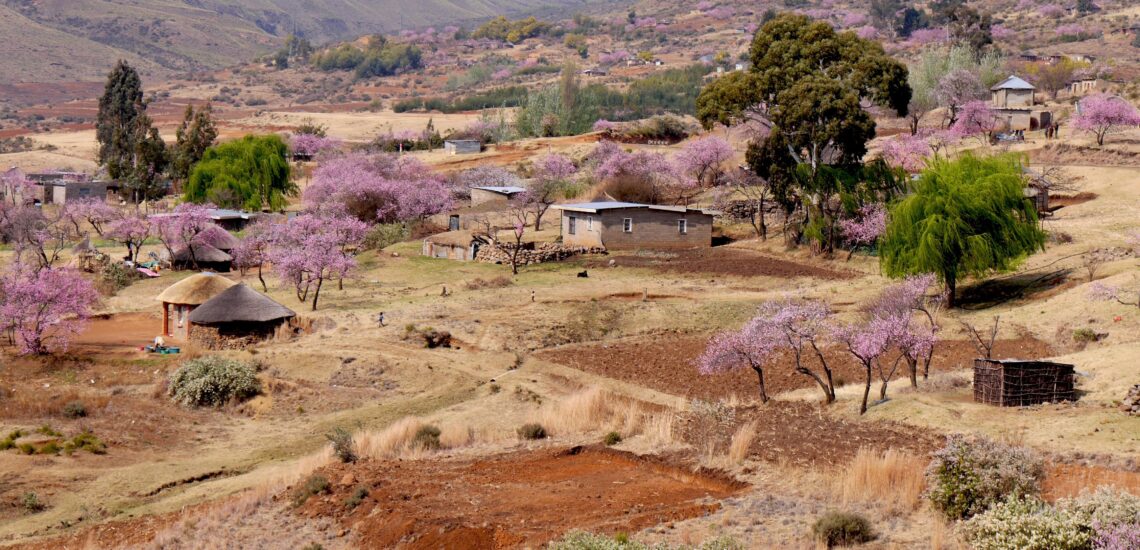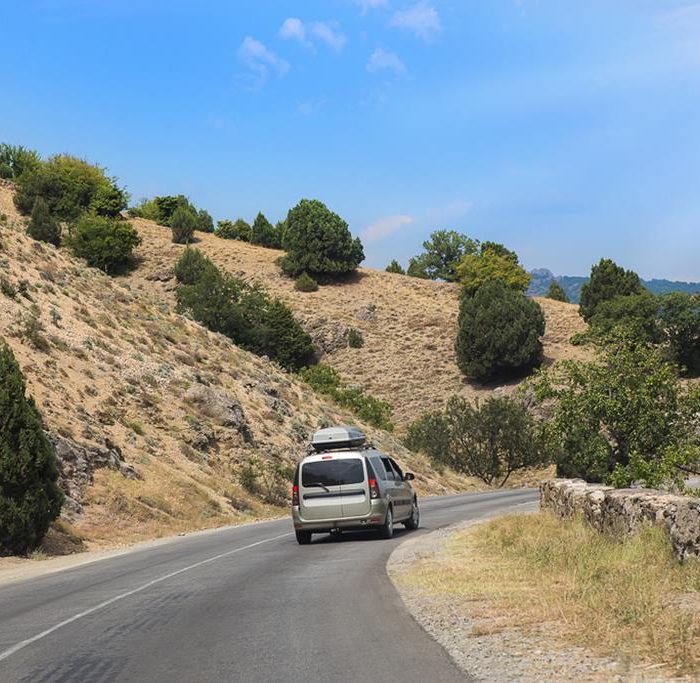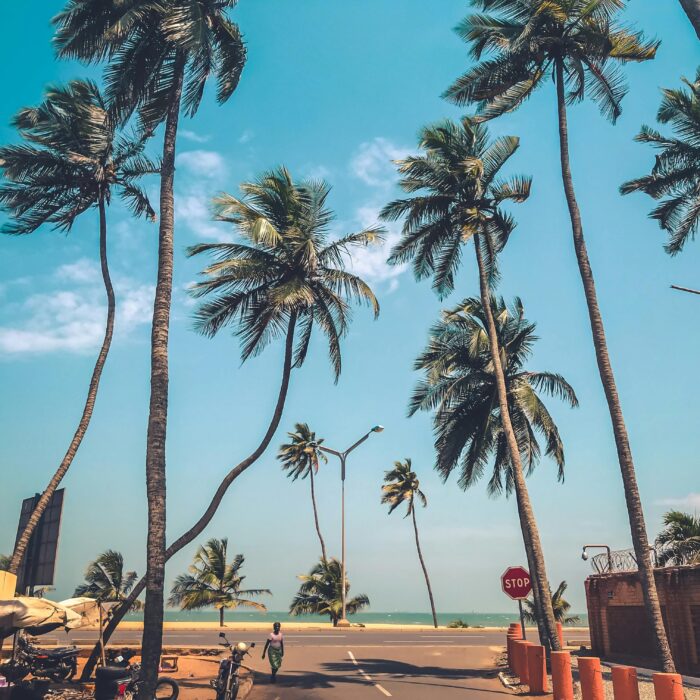Quick facts about Lesotho:
- Population: Approximately 2.3 million people.
- Capital: Maseru.
- Official Languages: Sesotho and English.
- Currency: Lesotho Loti (LSL), which is pegged to the South African Rand (ZAR).
- Government: Unitary parliamentary constitutional monarchy.
- Major Religion: Christianity (predominantly Roman Catholic and Protestant), with traditional African religions also practiced.
- Geography: Landlocked country completely surrounded by South Africa. It is situated in Southern Africa and is known for its mountainous terrain, with most of the country lying at an altitude of over 1,400 meters (4,600 feet) above sea level.
Fact 1: Lesotho is a highland country surrounded by South Africa
Lesotho is a highland country entirely surrounded by South Africa. Nestled within the Drakensberg mountain range, it is situated at an average elevation of around 1,400 meters (4,600 feet) above sea level, making it one of the highest countries in the world.
The country’s mountainous terrain contributes to its unique climate and natural beauty, characterized by rugged landscapes and scenic highlands. Despite being landlocked and entirely encircled by South Africa, Lesotho maintains its independence and has a distinct cultural and historical identity.

Fact 2: The road at Sani Pass is one of the most dangerous in the world
The road at Sani Pass is renowned for being one of the most dangerous and challenging roads in the world. Located in the Drakensberg Mountains, the pass connects South Africa to Lesotho, ascending from the South African side into the highlands of Lesotho.
Geographic and Climatic Challenges: The road is notorious for its steep gradients, sharp hairpin turns, and treacherous conditions, especially during adverse weather. It rises sharply over 2,800 meters (9,200 feet) above sea level, and its high altitude can lead to sudden changes in weather, including snow, fog, and ice, which can make driving particularly hazardous.
Driving Conditions: The gravel road is often uneven and can be very slippery, posing significant risks for drivers. The lack of guardrails and the narrow, winding nature of the pass add to the danger. Despite its perilous conditions, Sani Pass is also a popular route for adventurous travelers and 4×4 enthusiasts, offering stunning views and a unique crossing between South Africa and Lesotho.
Note: If you plan to travel around the country on your own, check the need for an International Driving Permit in Lesotho for driving.
Fact 3: Lesotho is home to one of the scariest airstrips in the world
Lesotho is home to one of the most intimidating airstrips in the world, the Matekane Airstrip. Situated at an altitude of approximately 2,500 meters (8,200 feet) above sea level, this airstrip is renowned for its challenging landing conditions.
The runway is built on a narrow plateau, with steep drop-offs on both ends, adding to the difficulty of landing and takeoff. Its location in a mountainous region exacerbates the risks, as pilots must contend with rapidly changing weather conditions and the high elevation, which can affect aircraft performance. The combination of these factors makes Matekane Airstrip one of the most daunting and dangerous airstrips globally, requiring highly skilled pilots to navigate its difficult landing conditions safely.

Fact 4: Dinosaur footprints and fossils found in Lesotho
Lesotho has garnered attention in the field of paleontology due to its significant dinosaur fossil discoveries. Notably, the area around Oxbow in southeastern Lesotho has revealed well-preserved dinosaur footprints dating back to the Jurassic period, approximately 200 million years ago. These footprints, found in sedimentary rock formations, provide crucial insights into the types of dinosaurs that roamed the region and their movement patterns.
In addition to footprints, Lesotho has yielded fossilized remains of dinosaurs, further enriching our understanding of prehistoric life. The fossils discovered contribute valuable information about the biodiversity and ecological conditions of the area during the Mesozoic era.
Fact 5: Maletsunyane Falls is almost 4 times higher than Niagara Falls
With a height of approximately 192 meters (630 feet), Maletsunyane Falls is nearly four times higher than Niagara Falls, which stands at about 51 meters (167 feet).
The falls are situated in the Maletsunyane River, which flows through a rugged, mountainous region of Lesotho. The dramatic drop of Maletsunyane Falls is particularly impressive, creating a stunning and powerful natural spectacle.
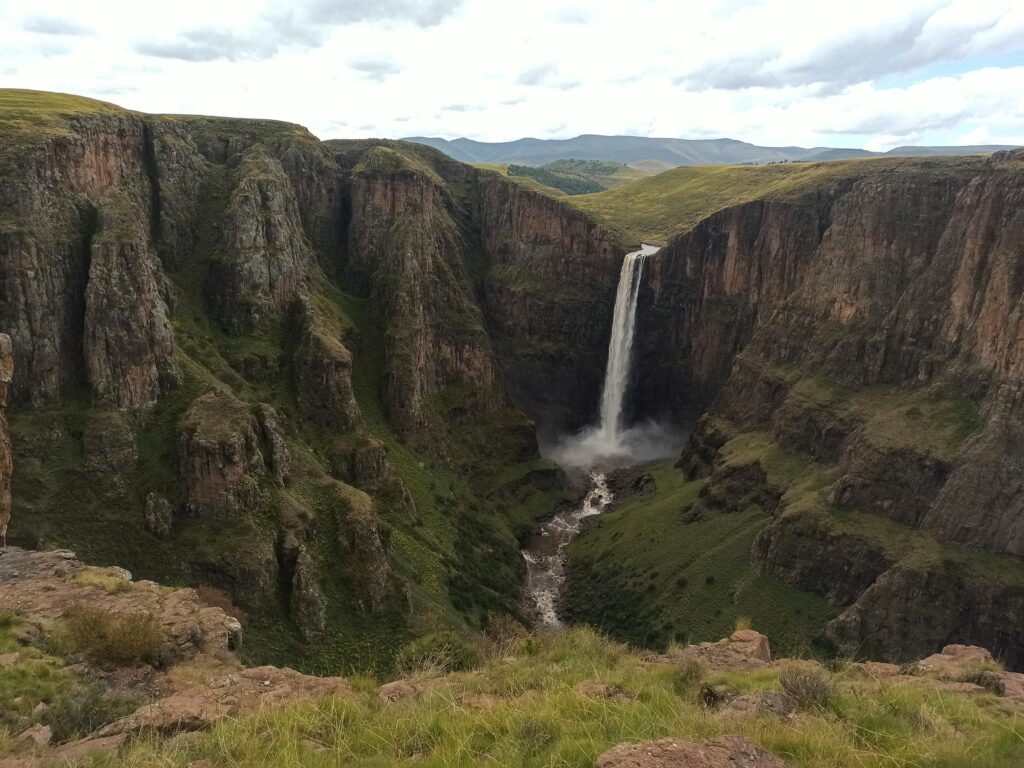
Fact 6: Lesotho is mining diamonds
Lesotho’s diamond mining industry has produced some of the world’s most remarkable diamonds, including the famous Lesotho Promise diamond. Discovered in 2006 at the Letšeng mine, this gem weighed an astonishing 603 carats in its rough form, making it one of the largest diamonds ever found.
The most notable diamond mine in Lesotho is the Letšeng diamond mine, located in the highlands of the country. It is known for producing some of the world’s largest and most valuable diamonds. The mine’s high-altitude location, at around 3,100 meters (10,200 feet) above sea level, contributes to its unique geological conditions that favor the presence of large gem-quality diamonds.
Fact 7: Traditional clothing is a blanket
In Lesotho, traditional clothing prominently features the use of a blanket known as the “Seshoeshoe” or “Basotho blanket” This garment holds deep cultural significance and is central to the Basotho people’s heritage. The blanket, typically made from wool, is worn over other clothing and comes in various patterns and colors. These designs often carry cultural meanings and reflect social status.
The Seshoeshoe blanket is also highly practical due to Lesotho’s cold highland climate. It provides essential warmth and protection against the elements.
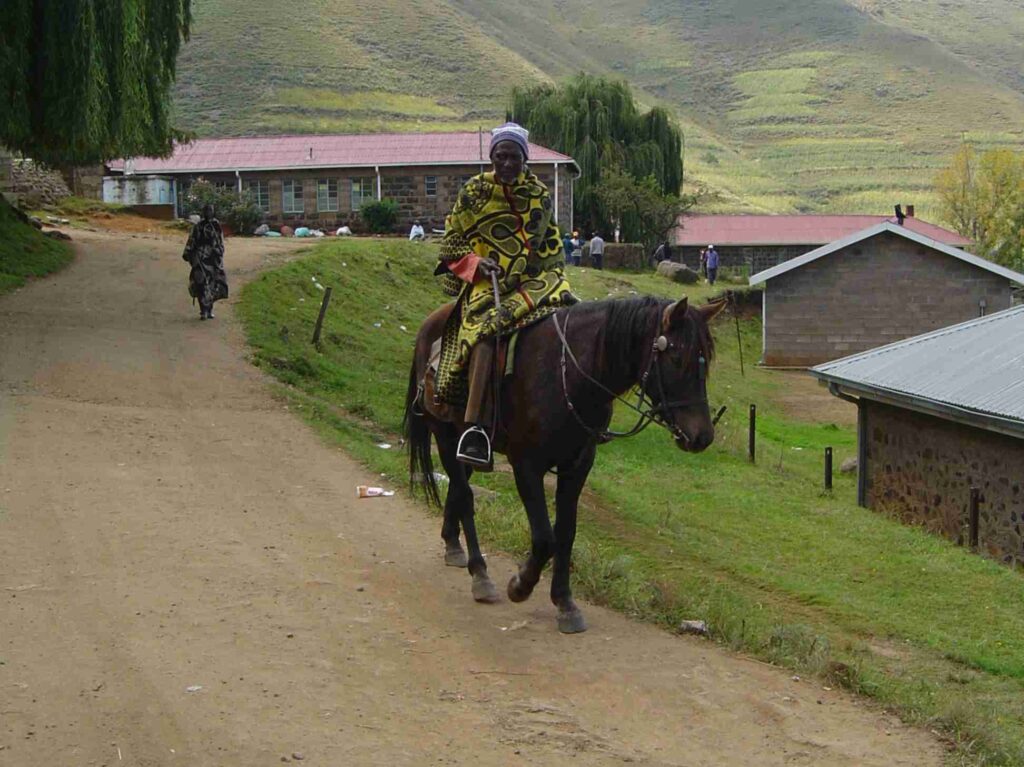
Fact 8: Lesotho has 2 national parks, one of which is part of a UNESCO site
Lesotho is home to two national parks, with one of them being part of a UNESCO World Heritage site. The two parks are the Sehlabathebe National Park and the Maloti-Drakensberg Park.
Sehlabathebe National Park, established in 1969, is renowned for its unique high-altitude flora and fauna, as well as its striking landscapes. It is a key part of the Maloti-Drakensberg Park, which spans both Lesotho and South Africa. This park is recognized as a UNESCO World Heritage site due to its rich biodiversity, stunning mountain scenery, and significant archaeological and cultural heritage, including ancient rock art.
Fact 9: The Basuto hat is the national symbol of Lesotho
The Basuto hat, also known as the “mokorotlo,” is indeed a national symbol of Lesotho. This traditional conical hat is an iconic representation of Basotho culture and heritage.
The mokorotlo is traditionally made from straw or other natural materials, shaped into a distinctive conical form. Its design is not only practical, providing shade and protection from the elements, but also carries cultural significance. The hat is often worn by men, particularly during ceremonial events and cultural celebrations, and is emblematic of Basotho identity and pride.

Fact 10: Lesotho has the highest adult literacy rate in Africa
Lesotho boasts the highest adult literacy rate in Africa, which reflects the country’s strong emphasis on education. As of recent data, Lesotho’s adult literacy rate stands at approximately 95%. This high rate of literacy is a result of significant investment in education and widespread access to schooling across the country. The commitment to education in Lesotho is evident in various government initiatives and programs aimed at improving educational infrastructure and promoting literacy.

Published September 15, 2024 • 6m to read

